By Tony Curtis
Just when you think that you have gathered all of the available information on the Caroline Chronicles (read all the documents on Early Access) you stumble across a digitized collection of the Louisville Daily Journal on archive.org. I am particularly interested in how news of the Blanche Levi murder was revealed to the public and how the ensuing case was covered by a prominent Louisville newspaper. And what did a deep dive into this collection uncover about the Caroline Chronicles? I invite you—our readers—to join me on this research trip!
The Levi family appears at various points in the newspaper from August 1862 until September 1863. Willis Levi—a steamboat engineer—first appears listed as a survivor of the Steamer Acacia disaster on August 30, 1862:

Louisville Daily Journal, August 30, 1862
And again with his brother Elias Levi in an auctioneer advertisement on January 30, 1863:
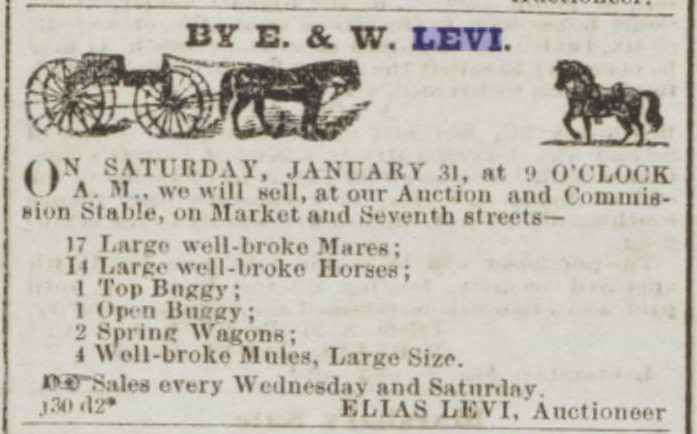
Louisville Daily Journal, January 30, 1863
The Levi’s are being mentioned regularly with this advertisement for their auctioning services, and Elias is even covered anonymously through a printed Jefferson County Sheriff’s advertisement for the sale of John West(ly)—Caroline’s husband. We see the original in the Jefferson County Court books in previously discovered documents. Elias Levi bought John West(ly), aged 25, on April 27, 1863 for $245:
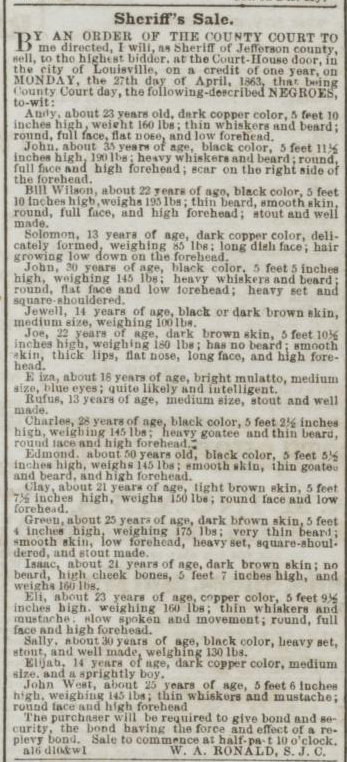
Louisville Daily Journal, April 18, 1863
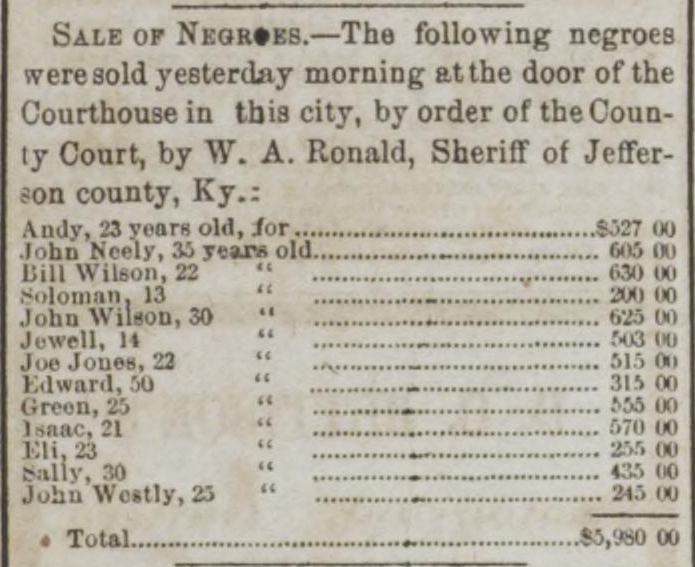
Louisville Daily Journal, April 28, 1863
But what about the death of Blanche Levi—daughter of Willis and Anne Levi? The first mention of the death of Blanche occurs in the April 22, 1863 obituaries, her death occurring one day earlier. The obituary is brief, giving her age, when the funeral will occur, and a brief bible verse:
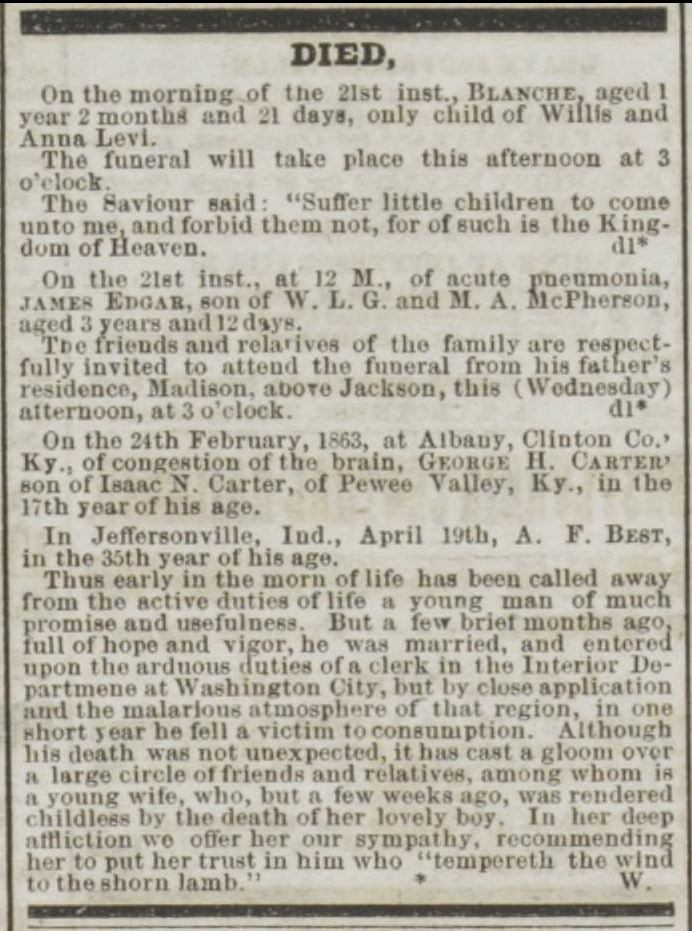
Louisville Daily Journal, April 22, 1863
The newspaper then falls silent for ten days. Not one mention of Blanche, the Levis, or Caroline—until May 2, 1863, when the newspaper prints, “For two weeks past we have withheld giving publicity to one of the most horrible and treacherous deeds ever committed in this city, in order to give the officers ample time to ferret out the guilty parties.” They announce “the wretch”—Caroline—was arrested and faced arraignment that same morning. Showing the inherent racial bias of society, the newspaper supposes that Caroline could not have committed without accomplice, stating, “It was believed that the girl had been instigated to this deed by some fiend in human shape, but diligent investigation has been made, and no accessory has as yet been discovered. There is something very mysterious about the crime, from the fact that no cause whatever had been given to the girl to prompt her to wreak her vengeance in this horrible crime. If she has an accomplice we sincerely trust that the wretch will be brought to justice.”

Louisville Daily Journal, May 2, 1863
This article also references Caroline’s status, they define her as “a contraband negro, from Tennessee, in the employ of Mr. Willis Levy.” Much like the previously discovered documents, Caroline’s status is constantly in flux. On May 2, 1863, the “Police Proceedings” section—the Civil War-era police blotter—announced “Caroline, a slave of James Deman, charged with poisoning a child of Willis Levi. The slave being too sick to be brought into court, the witnesses were recognized to go before the grand jury of the Circuit Court.” This gives us more insight into Caroline’s status, but it is also contradictory information. What was Caroline’s status—self-emancipated woman, contraband, slave, or a free woman of color (f.w.c.)? I am afraid newspaper coverage does not clarify Caroline’s status and as we concluded in prior research, her status remains inconclusive. It is unknown as to what the newspaper means by “too sick”.
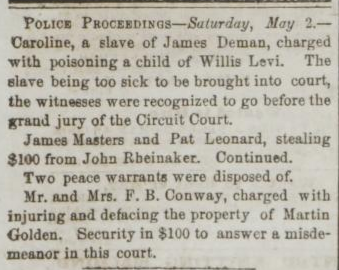
Louisville Daily Journal, May 4, 1863
On May 6, 1863, the grand jury of the Jefferson Circuit Court returned an indictment against “Caroline (a slave)”.

Louisville Daily Journal, May 7, 1863
The June 10, 1863 Louisville Daily Journal announces the “Commonwealth vs Caroline (a slave)” case for trial as a part of the June 1863 docket of the Jefferson Circuit Court—the trial to be held on Wednesday, June 17, 1863.
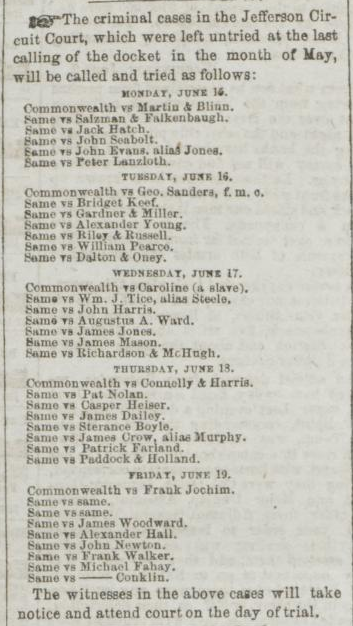
Louisville Daily Journal, June 10, 1863
Further mention of Caroline’s case does not appear until June 19, 1863, when a guilty verdict is announced: “The negro woman who poisoned the family of Mr. Levi, of this city, some months since, from the effects of which one of his children, a sweet little girl, died, was yesterday convicted of murder in the first degree in the court now in session here. She will doubtless be hung.”
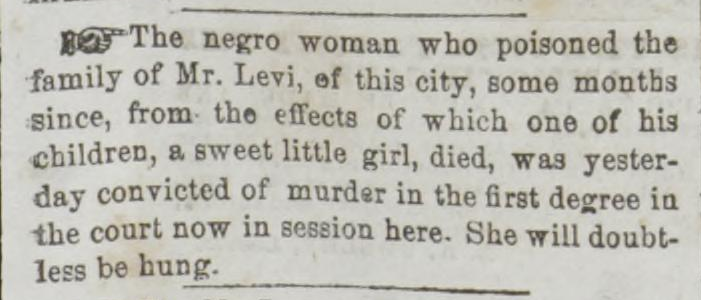
Louisville Daily Journal, June 19, 1863
The next mention of Caroline is not until August 14, 1863—almost two months later—announcing when she is to be hanged “at the corner of Eighteenth and Broadway streets” in Louisville. And again on September 8, 1863, following a month long respite.
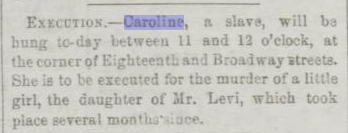
Louisville Daily Journal, August 14, 1863
On September 11, 1863, Caroline is granted a second respite “for a few days” by Governor Thomas E. Bramlette “on account of some newly discovered testimony which may have some bearing on her case.”
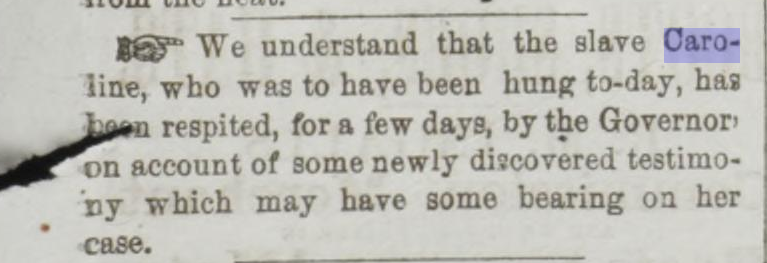
Louisville Daily Journal, September 11, 1863
And the new evidence convinced Governor Bramlette in favor of executive clemency, as the final mention of Caroline occurs on September 25, 1863, under the headline “Pardoned.”

Louisville Daily Journal, September 25, 1863
So what have we learned from the Louisville Daily Journal coverage? The Levis were active members in the Louisville business community. We have more concrete dates on the death of Blanche Levi and the chronology of Caroline’s case. We know that the newspaper purposefully withheld any coverage of the case to allow for time to investigate the facts of the case and to arrest any suspects. The newspaper coverage further complicates Caroline’s status for us—Caroline inhabited many different worlds depending on time and place. We also learn that there is no additional coverage of “one of the most horrible and treacherous deeds ever committed in this city”—no editorials, no letters to the editor . . . Nothing. So once again, a set of research questions has led us to more research questions—some of the questions remain, others have been developed. The search continues and we will update you as new evidence is uncovered.
Tony Curtis is an Assistant Editor of the Civil War Governors of Kentucky Digital Documentary Edition.



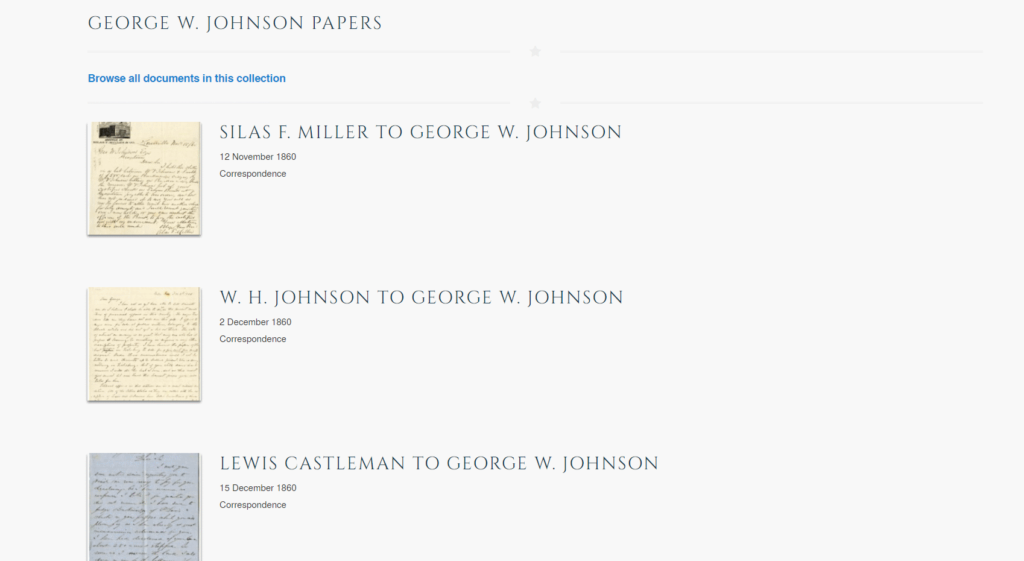
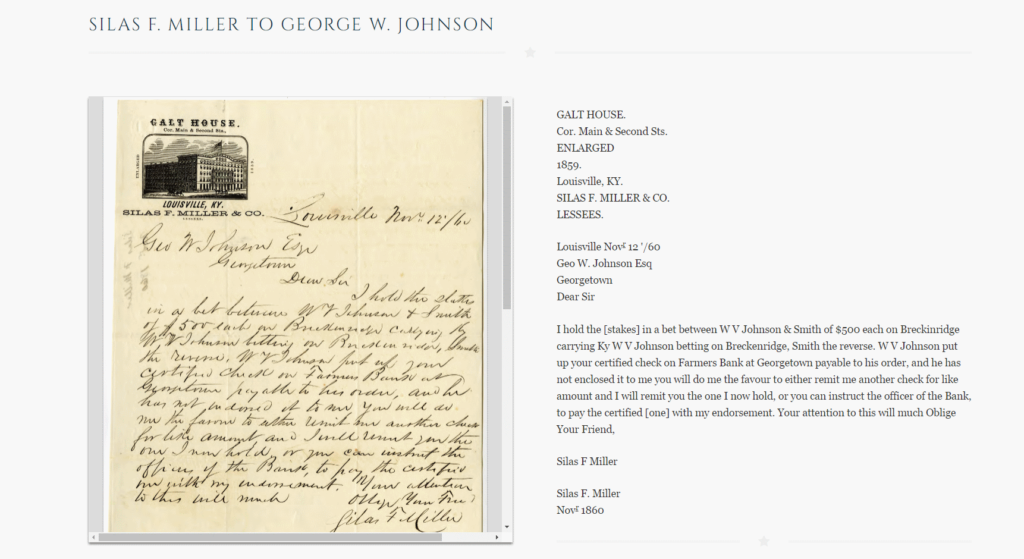
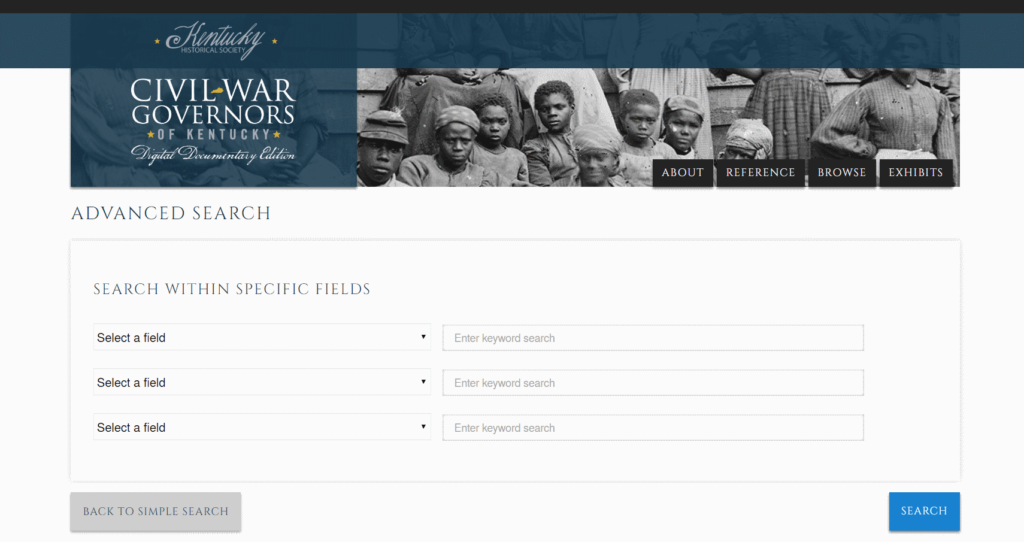
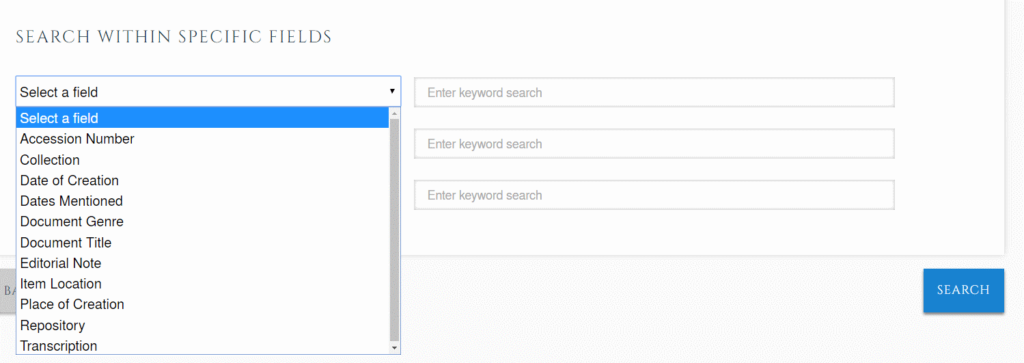
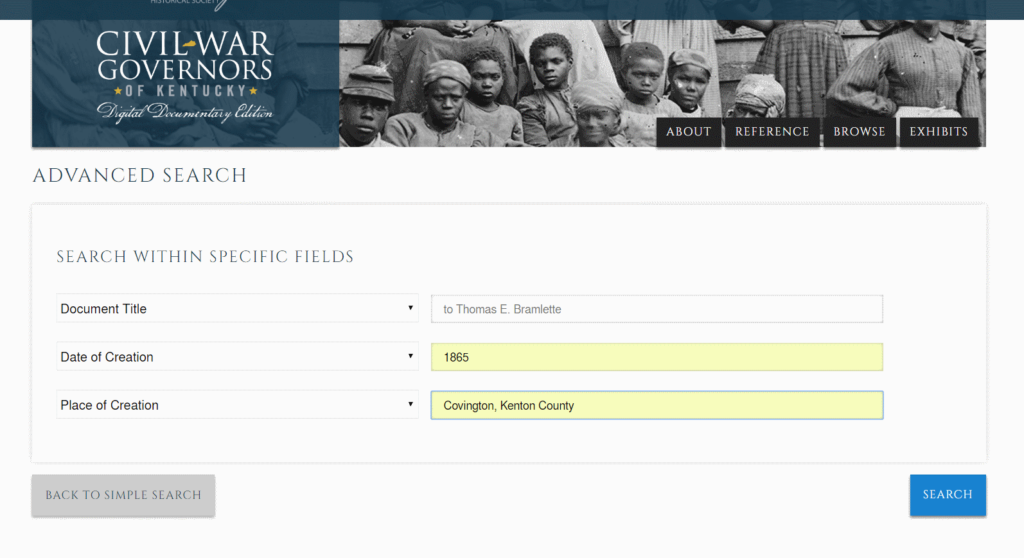
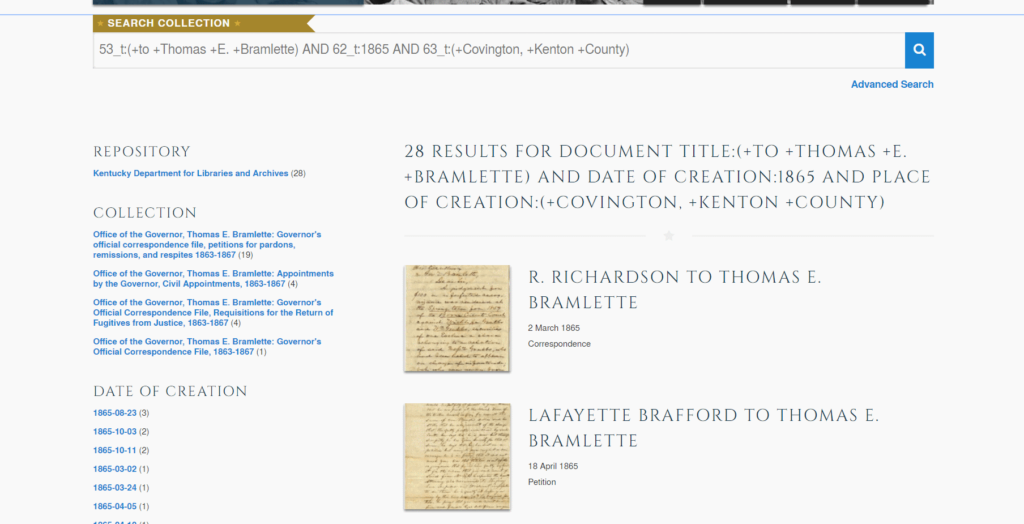
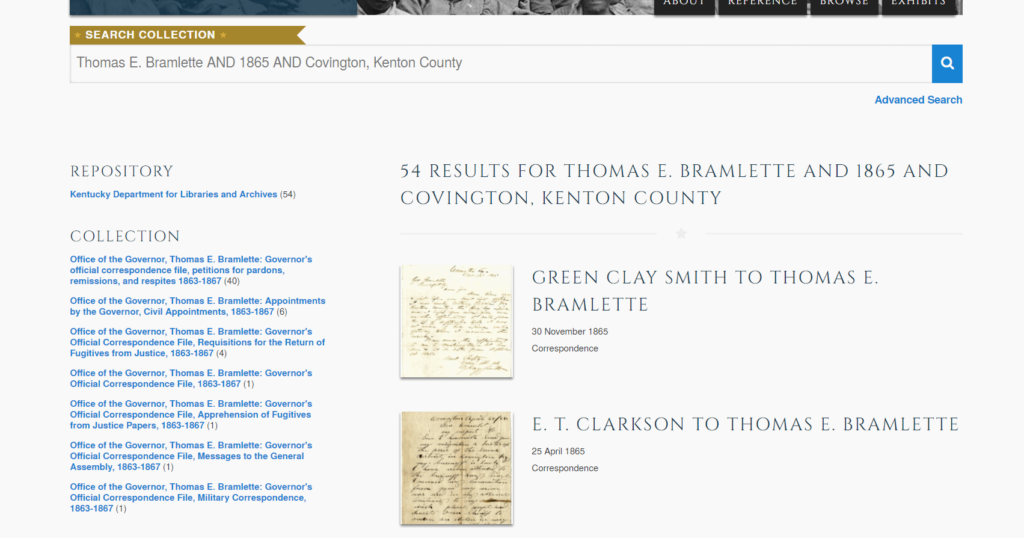
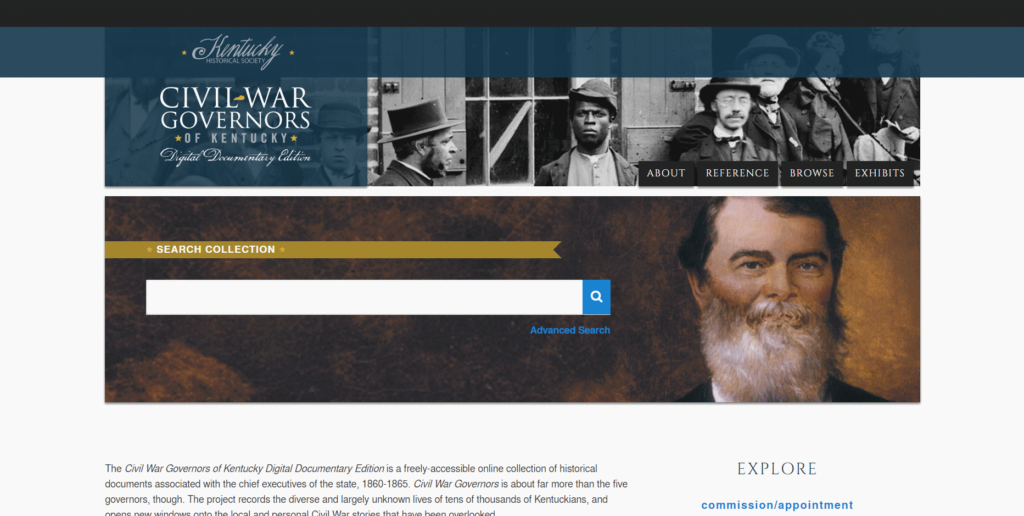
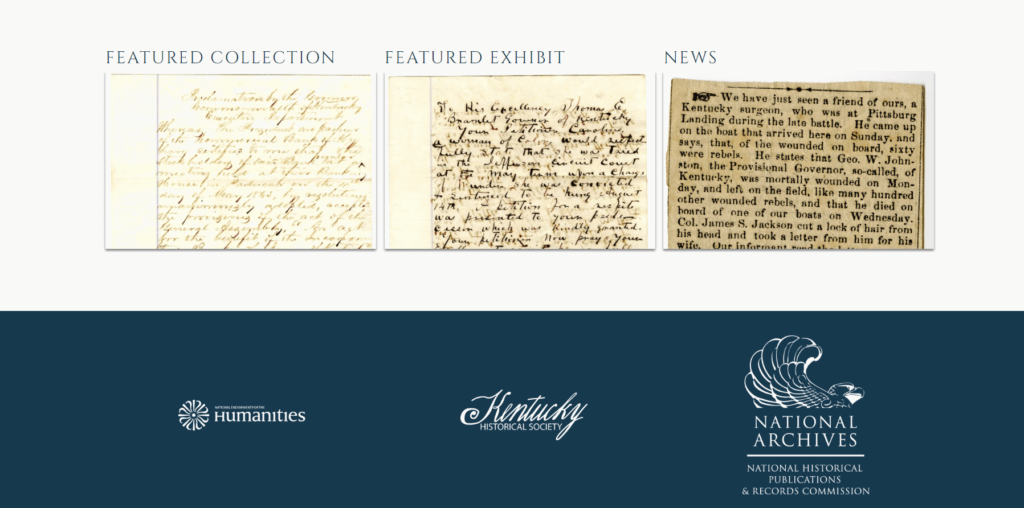
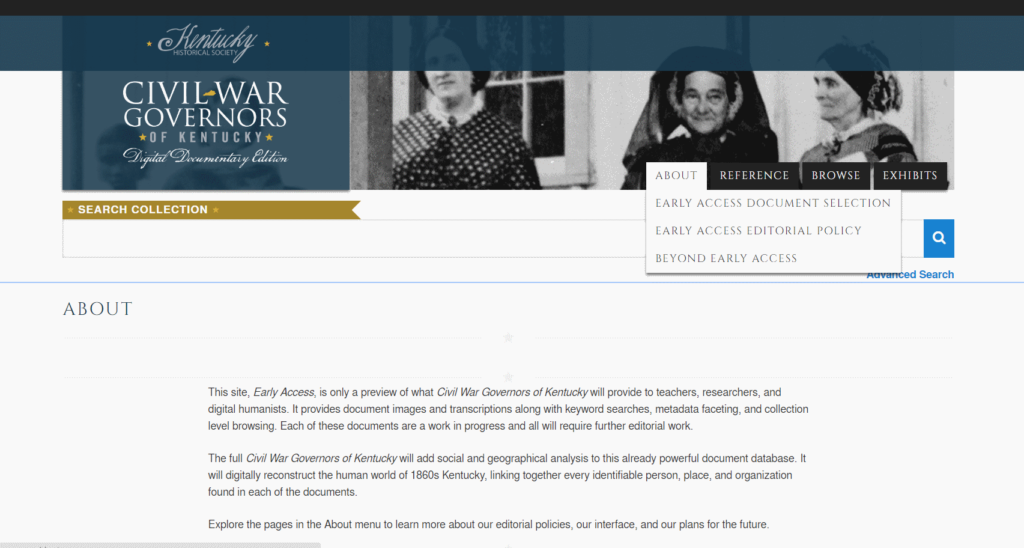
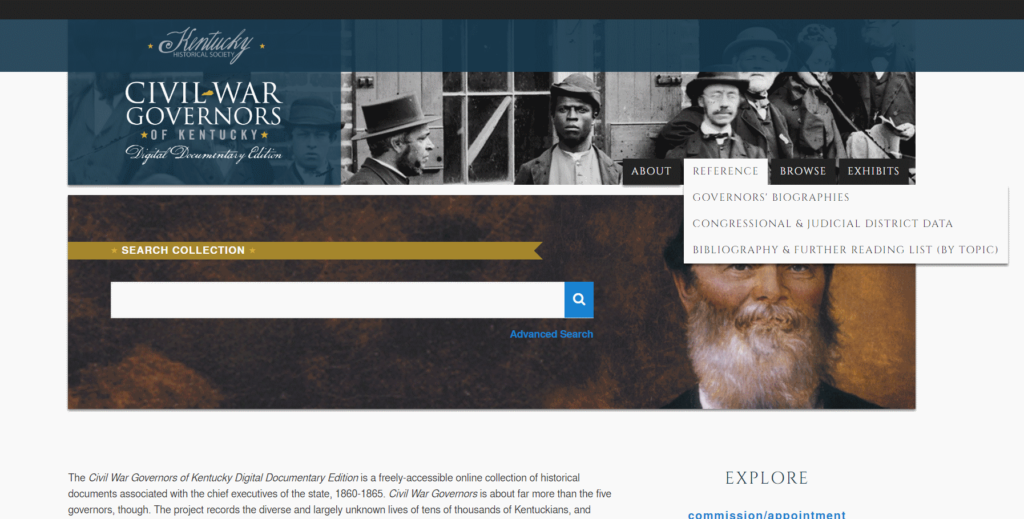
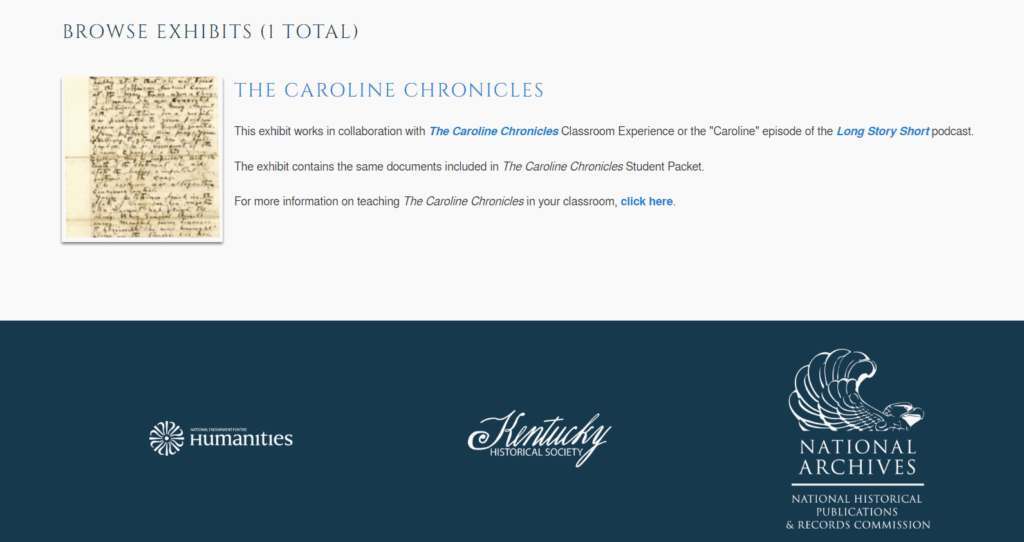














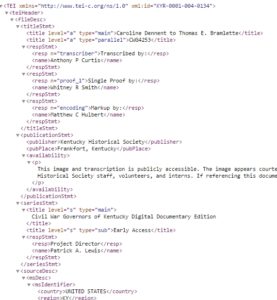 Have you found a hidden gem of a collection that you want to share with the world? Thinking of creative ways to actively engage your students in the work of history? Want to attract students to your department and develop diverse career skills for history majors?
Have you found a hidden gem of a collection that you want to share with the world? Thinking of creative ways to actively engage your students in the work of history? Want to attract students to your department and develop diverse career skills for history majors?